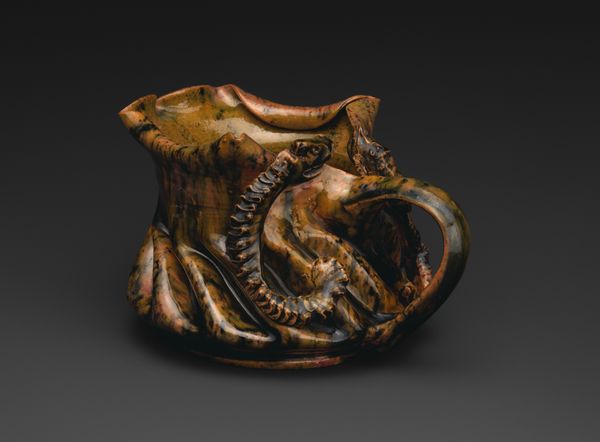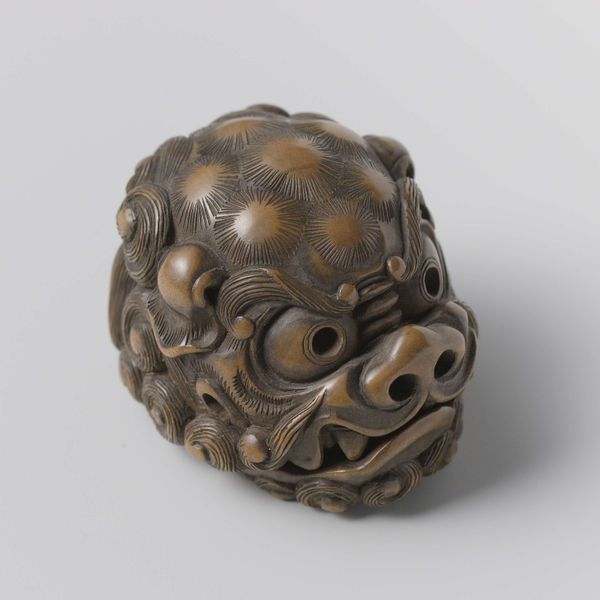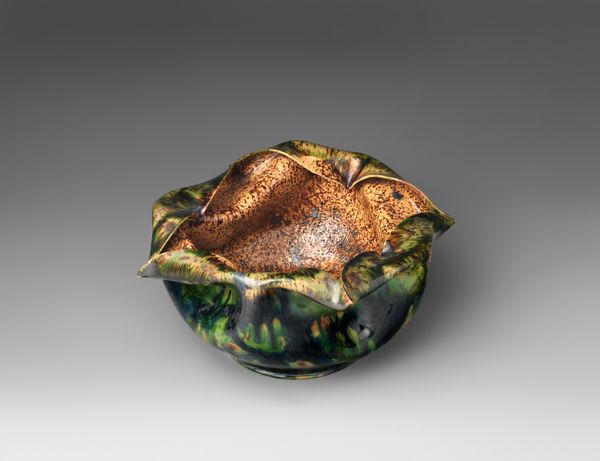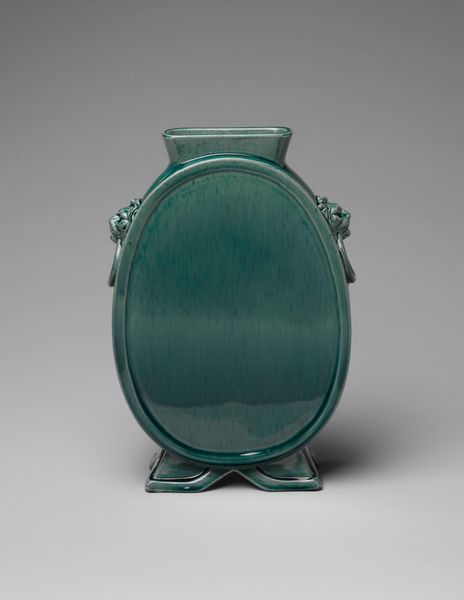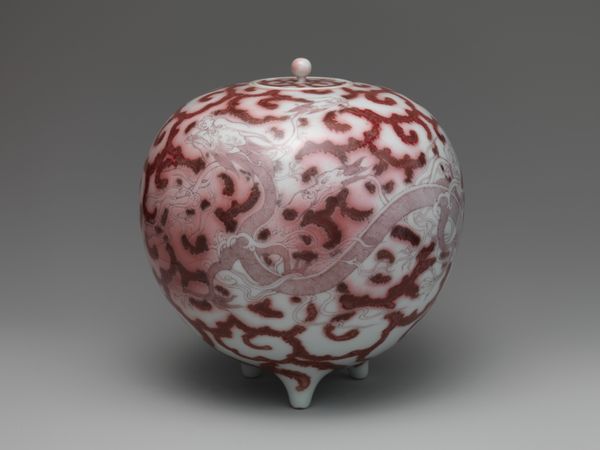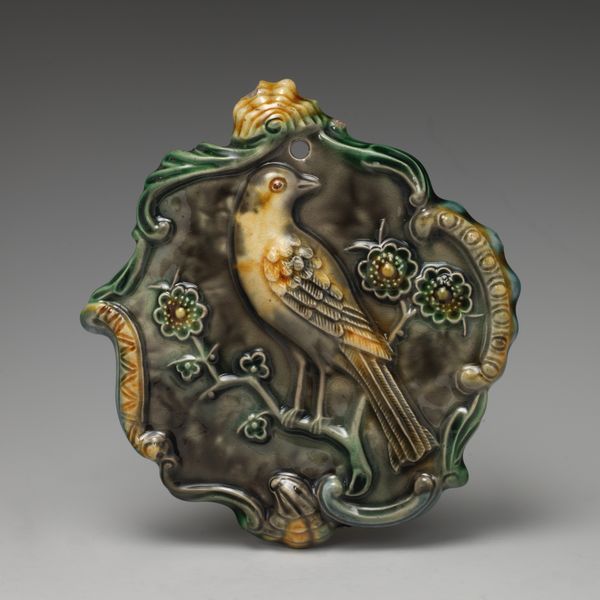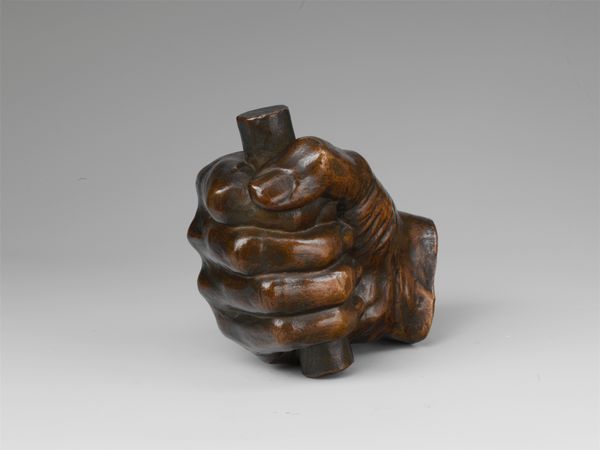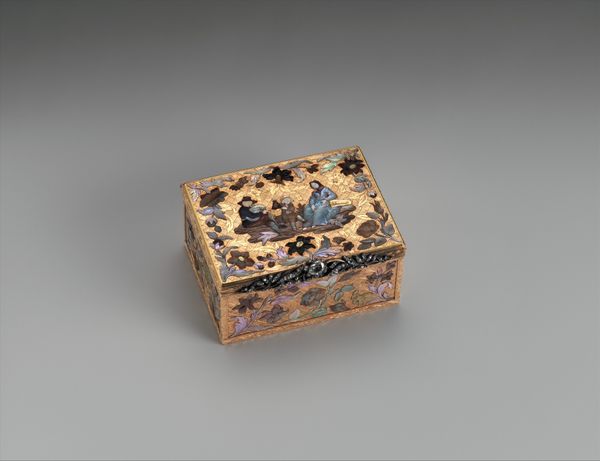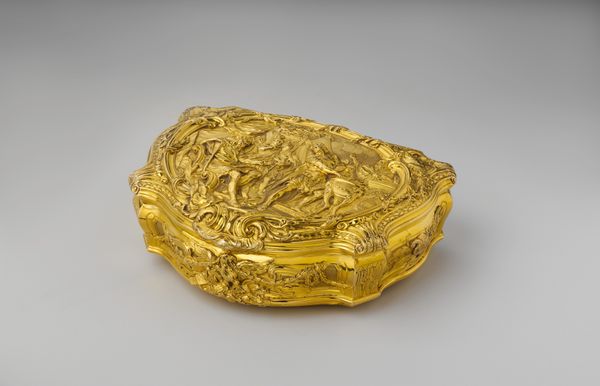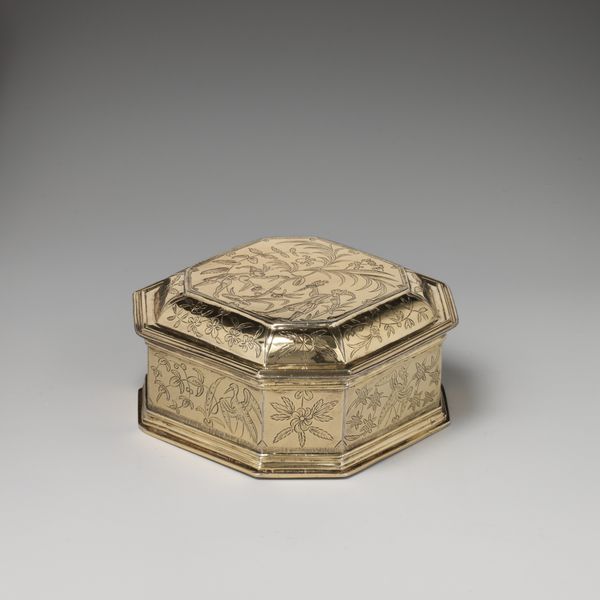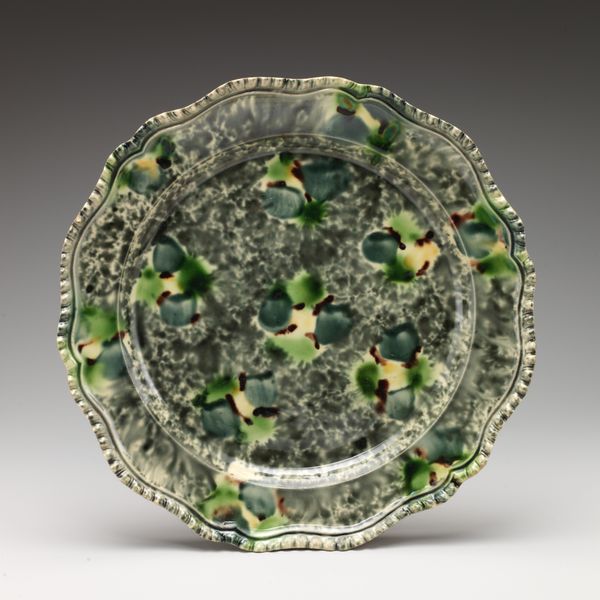
ceramic, sculpture
#
art-nouveau
#
asian-art
#
ceramic
#
sculpture
#
france
#
decorative-art
Dimensions: H. 2 1/4 in. (5.7 cm); W. 1 3/8 in. (3.5 cm)
Copyright: Public Domain
Curator: Before us, we have a "Bonbonniere" created around 1898 by the Berquin-Varangoz Workshop, currently held at the Metropolitan Museum of Art. It’s a rather striking example of decorative ceramic art from France. Editor: It has a mysterious allure to it. That deep, almost jade-like green makes it feel ancient. Curator: Yes, the color choice evokes that sense, doesn’t it? The form takes clear inspiration from Asian art, which had a strong influence on the Art Nouveau movement at the time. Editor: It really brings the question of artistry and labour to the foreground. Consider the painstaking process needed to shape such fine botanical details into the ceramic. I am wondering how this decorative element fits into a larger, modern network of artistic creation and consumerism. Curator: Certainly. We are confronted by the social dynamics in decorative arts, blurring boundaries and influencing aesthetic traditions across Europe. The naturalism you mentioned carries more meaning than mere aesthetics. Floral designs reference ideas of nature’s inherent power, of life and cyclical return, echoing broader fin-de-siècle fascinations with both beauty and decay. Editor: But I’m still struck by the intense craftsmanship involved. The physical effort… who exactly did this labor, and under what conditions? That intense colour suggests carefully mixed dyes, the sourcing of materials. What was the cost of it? These questions become even more pressing given the object's function as a "bonbonniere." Something to hold sweets, a luxury object— for whom exactly? Curator: Food for thought, indeed. Such ornate containers often symbolize wealth, refinement, and the rituals surrounding gift-giving. Even the container became valuable. The piece reveals cultural connections across time, all swirling together within this modest object. Editor: Exactly. Reflecting on this object forces one to appreciate the intricate dance between production and signification. Curator: Looking at "Bonbonniere", I am reminded of the power of art to not only reflect but also to preserve cultural values across generations. Editor: For me, this object offers the rare opportunity to see the labour in luxury—the hands involved, so easily glossed over.
Comments
No comments
Be the first to comment and join the conversation on the ultimate creative platform.
